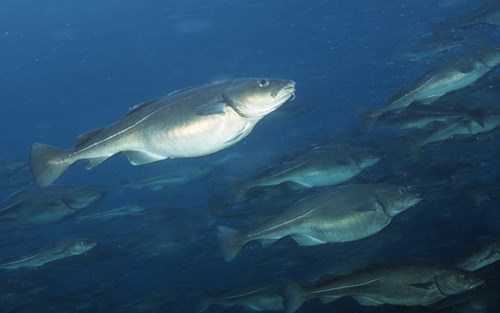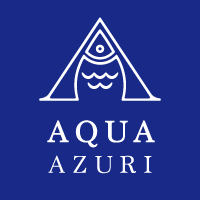Basic Knowlegde
of
cod
タラの基本知識
Basic knowlegde of cod
- ノルウェー語
- トルスク(Torsk)
- ラテン語
- Gadus morhua
タラ目 (Gadiformes) は、海水と淡水にすむ幾多の種が属する大きな生物分類上の仲間です。
ここではマダラ属を取り上げます。
- Norwegian
- Torsk
- Latin
- Gadus
The cod family is a large family with species that live in both saltwater and freshwater.
We will present the Gadus family:
タイセイヨウダラ (Gadus morhua)Atlantic cod (Gadus morhua)
北米沿岸(ニューイングランドからラブラドール)、グリーンランド南部沿岸、アイルランドやヨーロッパ沿岸地域(特に北海、ノルウェー海、およびバレンツ海)に分布。
Found on the coast of North America (from New England to Labrador), the southern coast of Greenland, the coast of Ireland and the European coastal areas (in particular the North Sea, the Norwegian Sea and the Barents Sea).
タイヘイヨウダラ(マダラ)(Gadus macrocephalus)Pacific cod (Gadus macrocephalus)
黄海、ベーリング海峡からロスアンゼルスに分布。
Common in the coastal areas of the Yellow Sea, through the Bering Strait to Los Angeles.
グリーンランドダラ(Gadus ogac)Greenland cod (Gadus ogac)
主として北西大西洋、および北極地域に分布。
Mainly found in the northwest Atlantic and Arctic areas.
タラの種類
Types of cod
タラには二種類あります。
定住性沿岸ダラは、浅い海の海底近くに分布。
移動性海洋ダラは、長距離を移動し、海面近くを泳ぎます。
ノルウェーが捕獲するタラの90%は、冷たく澄んだべレンツ海から来ます。
しかし、成長したタラは、毎年、年の内2か月間に限り、繁殖のため、ノルウェー海岸線近くまで移動して来ます。
回遊するタラの筋肉は引き締まり、長距離を泳いだフィレは独特な歯ごたえを持つ国民的な珍味のスクレイとなります。
There are two different types of cod:
Stationary coastal cod is found near the seabed in shallower water.
Migratory oceanic cod travels long distances and swims closer to the surface.
Over 90% of Norway’s cod catches come from the cold, clear waters of the Barents Sea.
But, for just a couple of months a year, the mature cod migrate closer to the Norwegian coastline to breed.
The travelling cod develop strengthened muscles and uniquely textured fillets on their long swim, transforming them into a national delicacy known as Skrei.
特性
Distinctive features

その特徴を覚えれば、簡単にタラを見分けられます。
タラは、独特なカーブをした白い線が入った長く、力強い魚体が特徴です。
3枚の背びれをもち、下あごにひげがあります。
タラの体の色からどこから来たのかを判別することができます。
浅い海から来たタラは赤っぽい茶色、又はオリーブ・グリーンで濃い色の斑点があります。
深海で暮らしたタラの体の色はより明るい、又は灰色がかかった色をしています。
驚かれるかもしれませんが、タラは40歳まで生きることもあり、体長も2m、体重60kgにまで成長することがあります。
タラの基本データ
- 寿命
- 40歳まで
- 体長
- 200cmまで
- 体重
- 60kgまで

It’s easy to spot this fish once you know what to look for.
Cod is characterised by an elongated and strong body with a distinctive curved white line.
It has three dorsal fins very close to the base and you’ll also be able to spot a pointy chin barbel on the lower jaw.
A cod’s colouring can also tell you a lot about where it comes from.
Cod from shallow water is reddish, brown or olive green with darker spots.
If the fish has lived at greater depths it will be lighter and often greyish in colour.
You might be surprised to learn that cod can live for up to forty years, grow to 200 cm and weigh up to 60 kg.
COD FAST FACTS
- Age
- up to 40 years
- Length
- up to 200 cm
- Weight
- up to 60 kg
メールロワール – 海が味に影響するのでしょうか
Merroir – Does the sea affect the taste?
ワインが造られた自然環境を「テロワール」という言葉で表すように、「メールロワール」という言葉は、魚の味はどこの海から来たかによって変わることを示唆しています。
お客様は絶えず食品の原産地について知りたがります。
「漁獲27番」だけでは不十分です。
メールロワールは、異なる場所で漁獲された魚を差別する一つの方策となり得ますし、これは、海をきれいに保つことの重要性の認識を広めることにもつながります。
Just as the word ‘terroir’ is used to describe the natural environment in which wine is produced, ‘merroir’ suggests that fish tastes different depending on where it’s from.
Customers always want to know more about the origins of their food and ‘catch 27’ simply isn’t descriptive enough.
Merroir could be a way of distinguishing between fish caught in different areas, which in turn could drive awareness about the importance of keeping our seas clean.
バレンツ海のような場所は他にない
There’s no place quite like the Barents Sea
冷たくて強い海流、そして強風は、人間にとって厳しい環境ですが、バレンツ海は世界最大のタラの生息海域です。
タラはここで力強く発育し、その美味な白身は、最初のノルウェー人が極寒の冬を乗り越えるために必要な栄養源となったのです。
バレンツ海には食として提供するに充分なタラが生息しています。
タラはまず動物プランクトン、オキアミや甲殻類を餌にします。成長するにつれ、カラフトシシャモやニシン等の小魚を餌にします。
タラがこの海域で繁栄できるもう一つの理由としては、順応性が挙げられます。
タラは「底魚」で主として海底近辺に生息しますが、海面の近くでも生息できます。
Cold waters, strong currents and powerful winds create a challenging environment for humans, but the Barents Sea is home to the world’s largest cod population.
Cod thrives here. In fact, the tasty white fish provided the very first Norwegians with the nutrition they needed to survive through cold winters.
There’s plenty for cod to eat in the Barents Sea.
It starts life feasting on zooplankton, krill and crustaceans, before moving onto smaller fish, such as capelin and herring.
Another reason for cod’s success here is its adaptability.
Cod is ‘demersal’ (meaning it mainly lives near the bottom of the sea), but it can also thrive near the surface.

